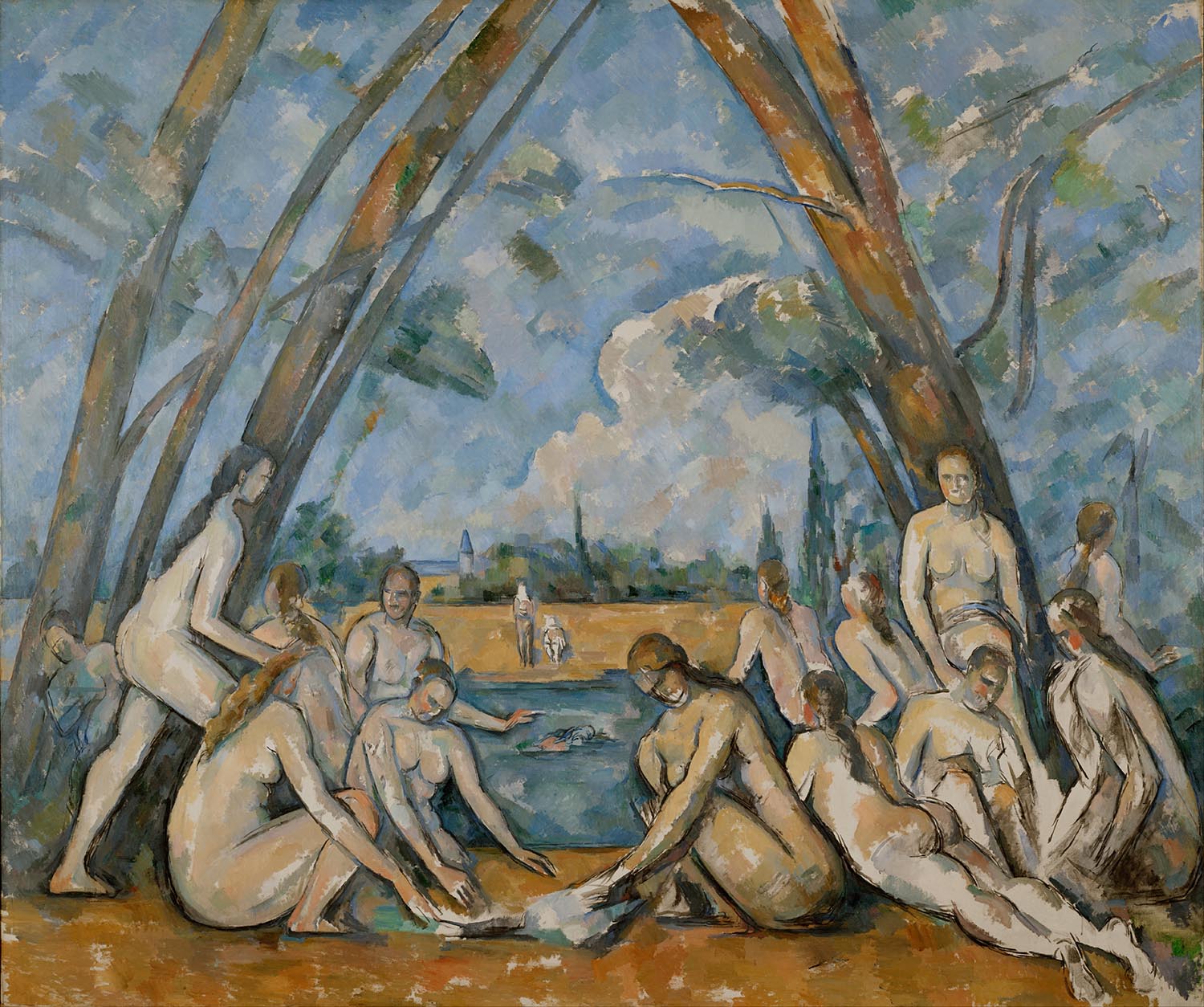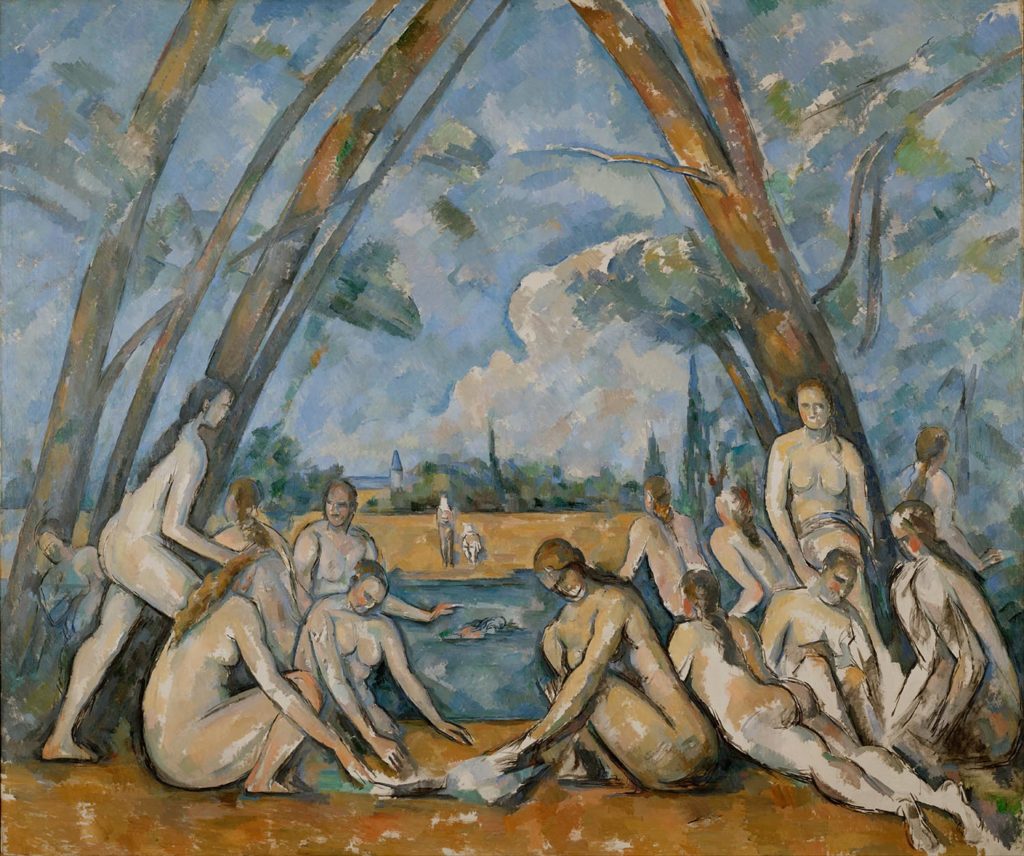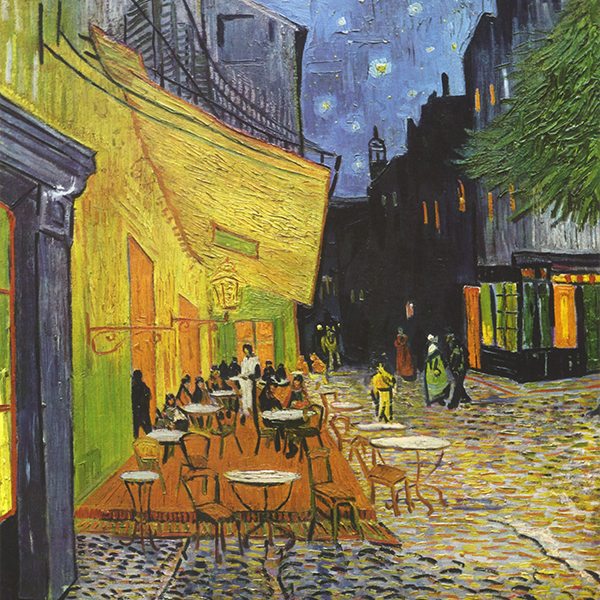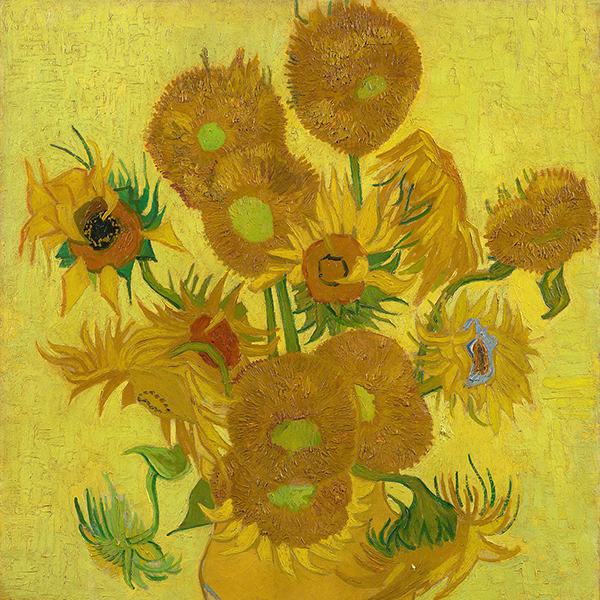The Bathers (in French: Les Grandes Baigneuses)
Paul Cézanne, 1906
The Bathers (in French: Les Grandes Baigneuses), was painted by French artist Paul Cézanne at the dawn of the 20th century. The largest of a series of “Bather” paintings by Cézanne and occasionally referred to as “Big Bathers” or “Large Bathers”, it is considered one of the masterpieces of modern art, and Cézanne’s finest work. He worked on the canvas for 7 years, yet even at his death in 1906, he did not consider it completely finished.
Role in Art
With Bathers, Cézanne continuously moved away from the traditional presentation of paintings, an intentional move designed to make the work have less appeal to the novice viewer. This was done in order to avoid fleeting fads and give a timeless quality to his work. It also contributed to help pave the way for future artists to disregard current trends and paint pieces which would appeal equally to all generations.
In The Bathers, the female shapes are depicted in an abstract way that lends density and tension to the painting. The overall coloring remains harmonious and the use of blue lends immense appeal and beauty to the painting. It is exceptional among his work in symmetrical dimensions, with the adaptation of the nude forms to the triangular pattern of the trees and river. This move towards patterns and shapes would form the basis for future art movements like cubism.
A Legacy
The painting was purchased in 1937 for $110,000 with funds from a trust fund for the Philadelphia Museum of Art by their major benefactor Joseph E. Widener. It is still on display at this museum today. The painting was also featured in the BBC2 series “100 Great Paintings”.




